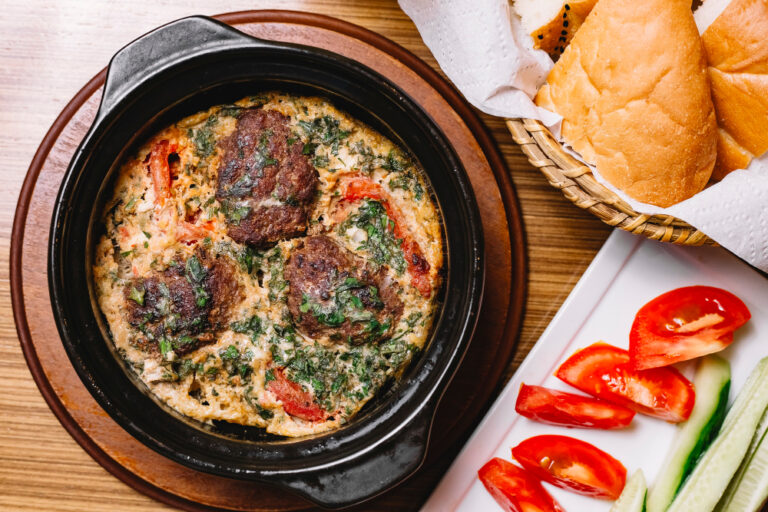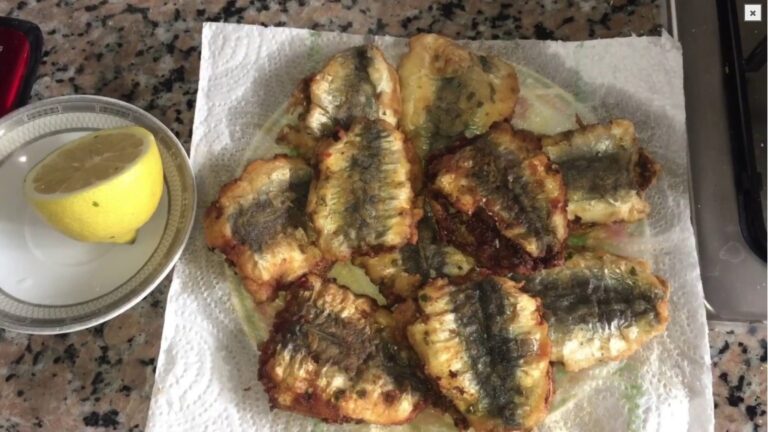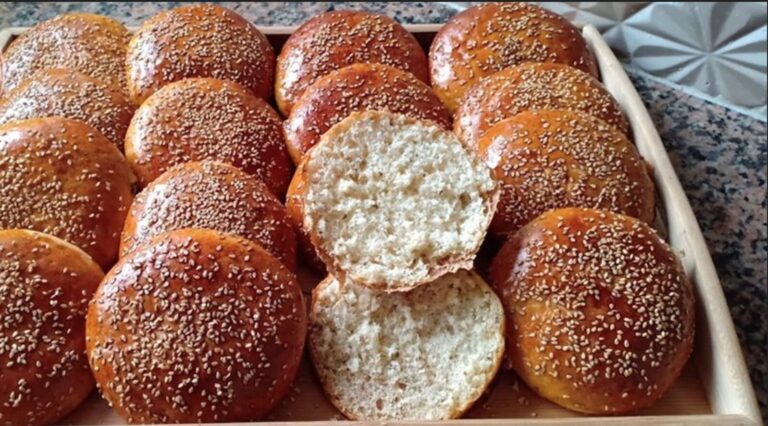
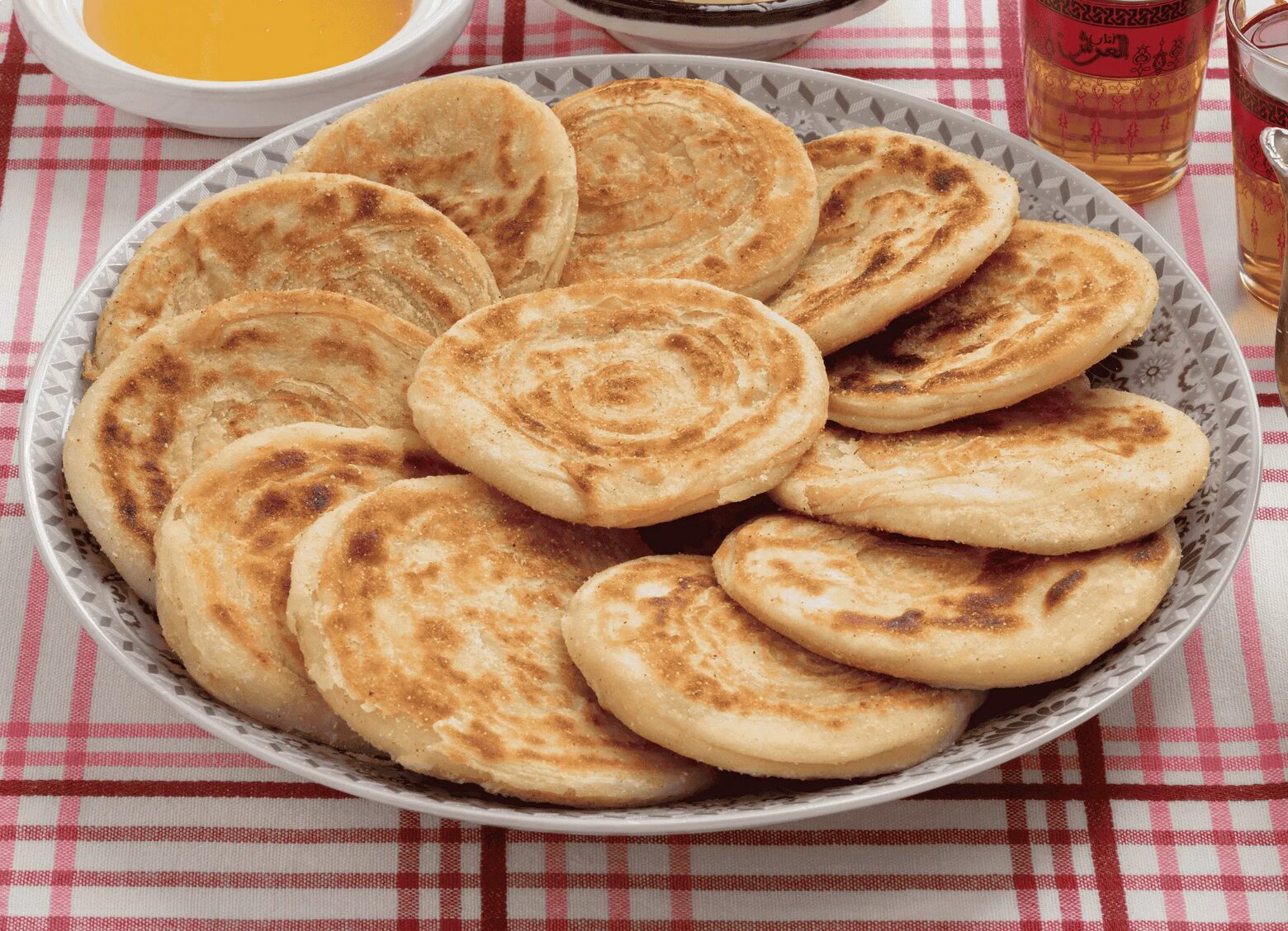
When traveling through Morocco, food is often the bridge between visitors and local culture. The vibrant souks, fragrant tagines, and sweet mint tea are unforgettable, but it’s the humble street-side breads and pancakes that often leave the deepest impression. One of these delights is the Moroccan Meloui Recipe – Traditional Layered Pancakes, a flaky, buttery treat that showcases Morocco’s love for bread-making and culinary creativity.
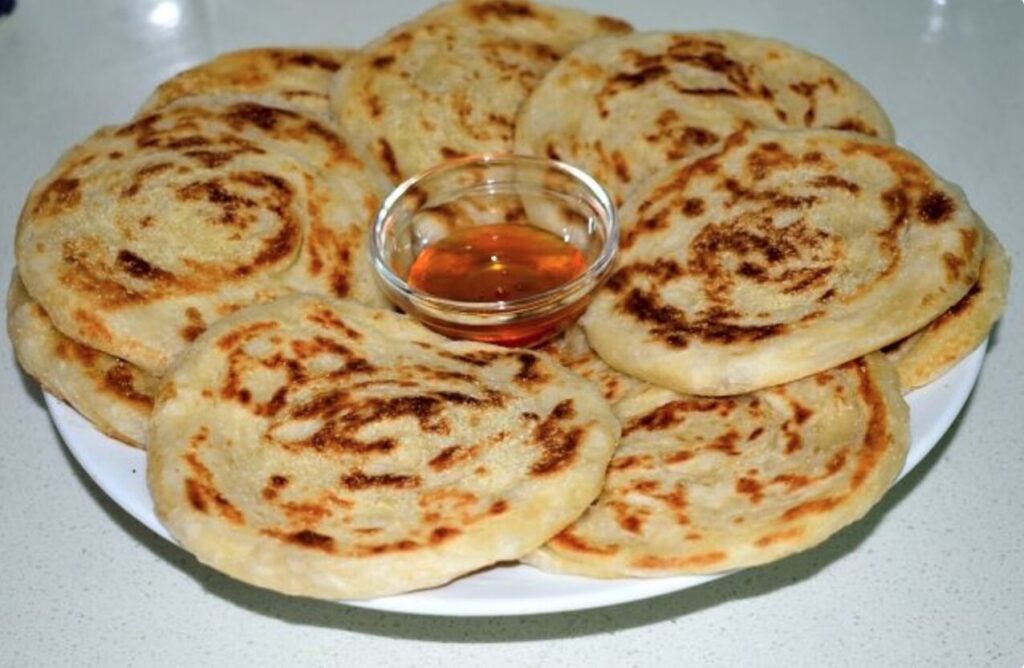
Meloui is not just food; it’s a cultural experience. Prepared in homes, bakeries, and by street vendors, these round, layered pancakes are enjoyed for breakfast, afternoon snacks, or alongside steaming cups of Moroccan mint tea. In this article, we’ll explore the history and flavors of Meloui, where to taste it across Morocco, and why it should be on every traveler’s foodie bucket list.
What is Moroccan Meloui?
Meloui (sometimes spelled mlawi or melwi) is a traditional laminated pancake made by folding and coiling dough into a round, layered shape before cooking it on a hot griddle. The result is a flatbread-pancake hybrid with a crispy exterior and soft, chewy layers inside.
The word meloui comes from the Arabic verb meaning “to roll” or “to fold,” describing the signature technique used to prepare the dough. Unlike simple flatbreads, Meloui involves spreading the dough thinly, brushing it with oil or butter, folding it several times, and then shaping it into spirals.
This process gives Meloui its unique texture—crispy edges with buttery layers that peel apart like pastry. Served plain, with honey, or sometimes with cheese, Meloui is a versatile comfort food.
Meloui is most commonly found in Moroccan households and markets in cities like Casablanca and Marrakech. It’s often compared to Msemmen, another Moroccan layered flatbread, though Meloui is rolled into a round spiral while Msemmen is square.
Where to Enjoy Meloui in Morocco
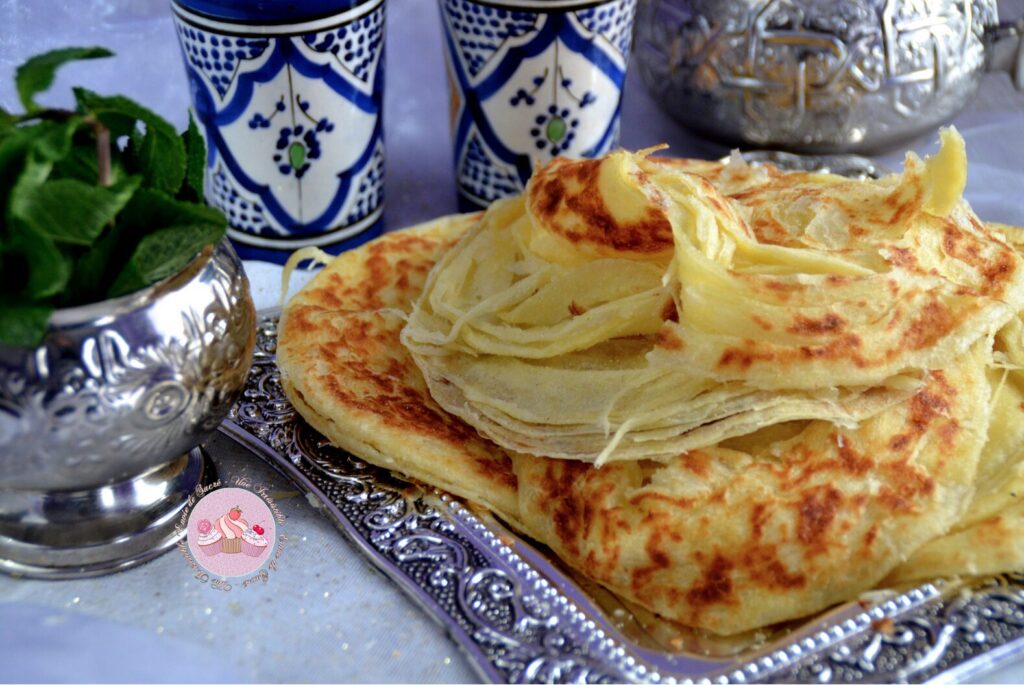
Street Food Markets
Street vendors across Morocco prepare Meloui fresh each morning. Watching them stretch, fold, and cook the dough on flat griddles is a performance in itself. In Marrakech’s Jemaa el-Fnaa, the sound of sizzling Meloui fills the air, attracting both locals and tourists.
Cafés and Breakfast Spots
In cities like Rabat or Fes, small cafés serve Meloui as part of a traditional Moroccan breakfast. Often paired with honey, amlou (a nut-based spread), or jam, it’s the perfect fuel for a day of sightseeing.
Rural Villages and Guesthouses
In the Atlas Mountains and rural villages, families often prepare Meloui by hand, offering travelers a truly authentic taste. Staying in a guesthouse provides an intimate opportunity to enjoy freshly made pancakes in a family kitchen.
Travel Tips and Cultural Insights
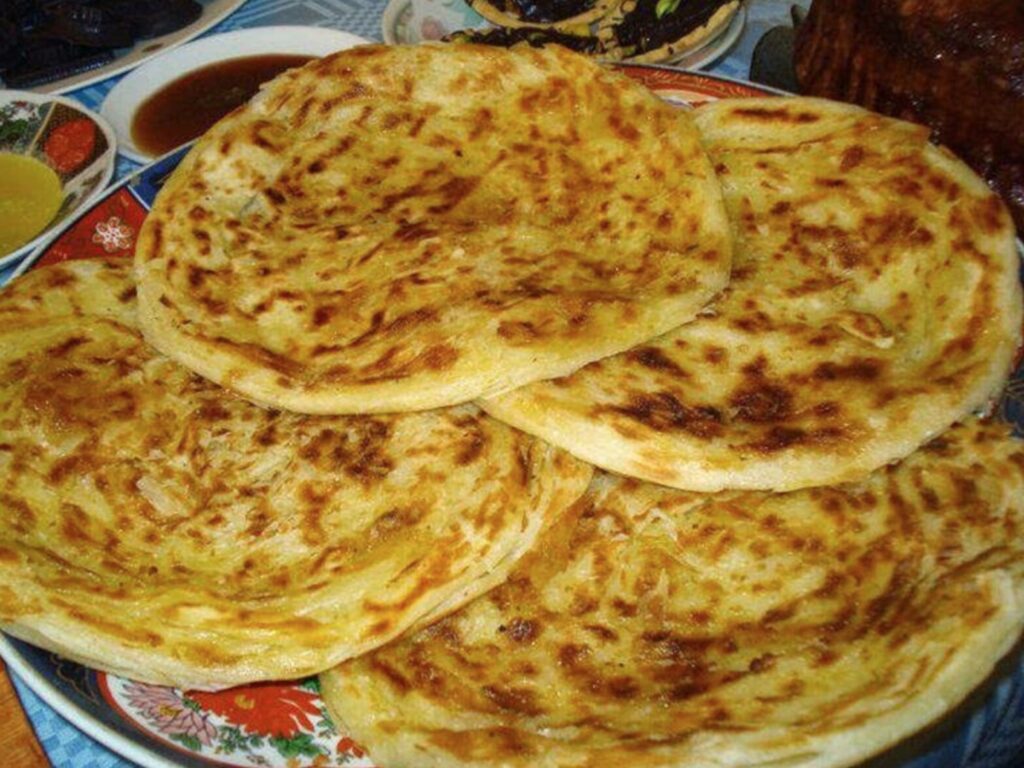
- Best Time to Try: Meloui is usually served fresh in the morning or late afternoon. Arrive early at markets to taste it hot from the griddle.
- Pair It Well: The most traditional pairing is with Moroccan mint tea, though coffee or warm milk are also common.
- Affordable Treat: A single Meloui pancake from a street vendor usually costs just a few dirhams, making it a budget-friendly snack.
- Respect the Ritual: In Moroccan culture, food is shared. If you’re offered Meloui in a home, always accept—it’s a gesture of hospitality.
- Learn to Cook It: Many cooking schools across Morocco include Meloui in their lessons. Learning the folding technique firsthand is a fun and memorable experience.
Stories from Travelers
One traveler described her first taste of Meloui in Fes: “I thought I was just ordering bread, but when I bit into the flaky layers, I realized it was something special. It was buttery, warm, and unlike any pancake I’d ever had.”
Another visitor recounted a cooking class in Essaouira where they struggled with the delicate folding process. “My Meloui looked messy, but when it cooked, it still tasted delicious. The chef told us that even imperfect Meloui carries the spirit of Moroccan food—simple, welcoming, and full of flavor.”
These stories illustrate how Meloui creates lasting memories, whether through the taste, the preparation, or the experience of sharing it with others.
Seasonal Insights and Recommendations
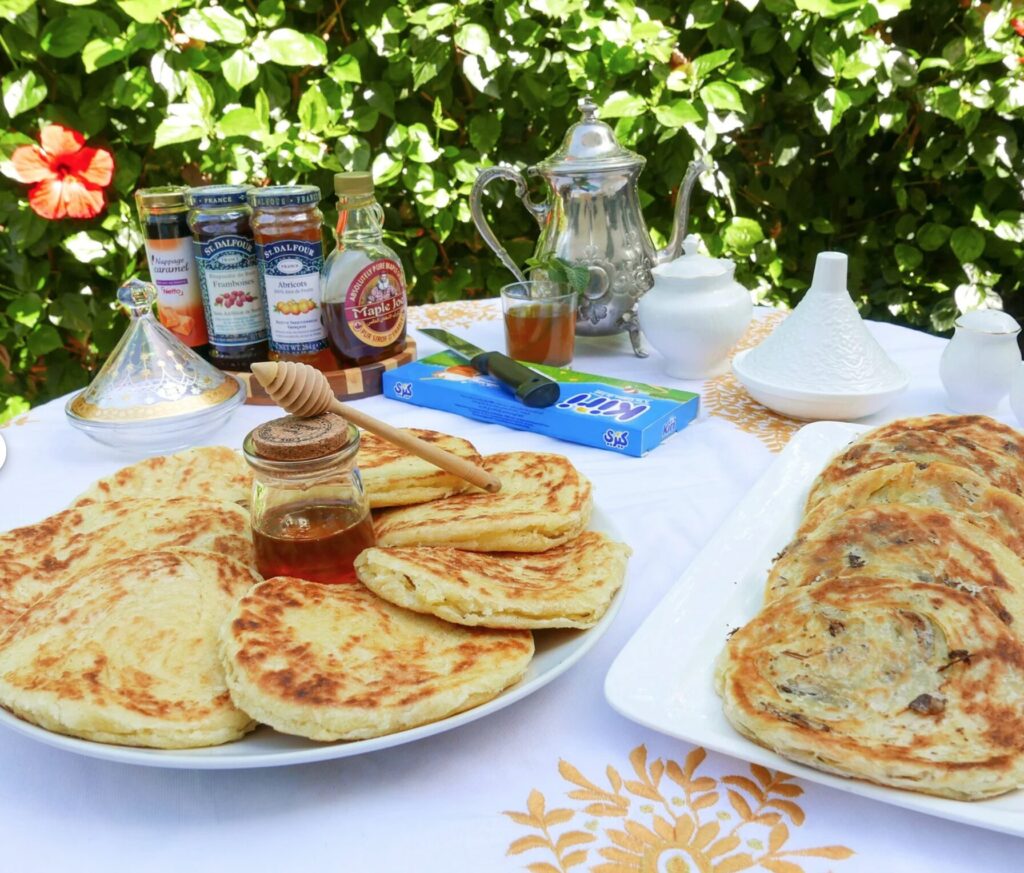
- Winter Warmth: In colder months, Meloui is often enjoyed with honey and butter, offering warmth and energy for chilly mornings.
- Spring Freshness: Served with fresh orange juice during citrus season, Meloui feels lighter and refreshing.
- Ramadan Special: While not as iconic as chebakia or harira, Meloui sometimes appears on Ramadan tables as a filling pre-dawn meal (suhoor).
- Festivals and Celebrations: During Eid or family gatherings, Meloui may be served with richer accompaniments like amlou or cheese, turning it into a celebratory treat.
FAQ About Moroccan Meloui Recipe – Traditional Layered Pancakes
What is Moroccan Meloui made of?
Meloui is made from simple ingredients: flour, semolina, salt, water, and oil or butter. The layering and folding technique gives it its signature flaky texture.
How is Meloui different from Msemmen?
While both are layered Moroccan breads, Meloui is coiled into a round spiral, whereas Msemmen is shaped into squares. Meloui tends to be slightly thicker and chewier.
Can I make Meloui at home?
Yes! With practice, anyone can make Meloui at home. The key is learning the folding and coiling method that creates the layers. Many cooking classes in Morocco teach travelers how to prepare it.
Is Meloui sweet or savory?
Meloui itself is neutral, making it versatile. It can be eaten with honey, jam, or butter for sweetness, or with cheese and olives for a savory twist.
Where can I find Meloui in Morocco?
You can find Meloui at street food stalls, local cafés, and homes across Morocco. Marrakech, Fes, and Casablanca are especially great cities to try it.
Conclusion
The Moroccan Meloui Recipe – Traditional Layered Pancakes is more than just a dish; it’s a reflection of Moroccan culture, craftsmanship, and everyday hospitality. From the bustling streets of Marrakech to the quiet kitchens of mountain villages, Meloui is a food that unites people over warmth, flavor, and tradition.
For travelers, tasting Meloui is not just about eating—it’s about experiencing Morocco’s rhythms, its creativity, and its generosity. So when planning your Moroccan adventure, make sure to include Meloui on your must-try list. And if you’re back home and longing for the flavors of Morocco, why not try making it yourself? A single bite of this flaky pancake will transport you straight back to the heart of Morocco.

